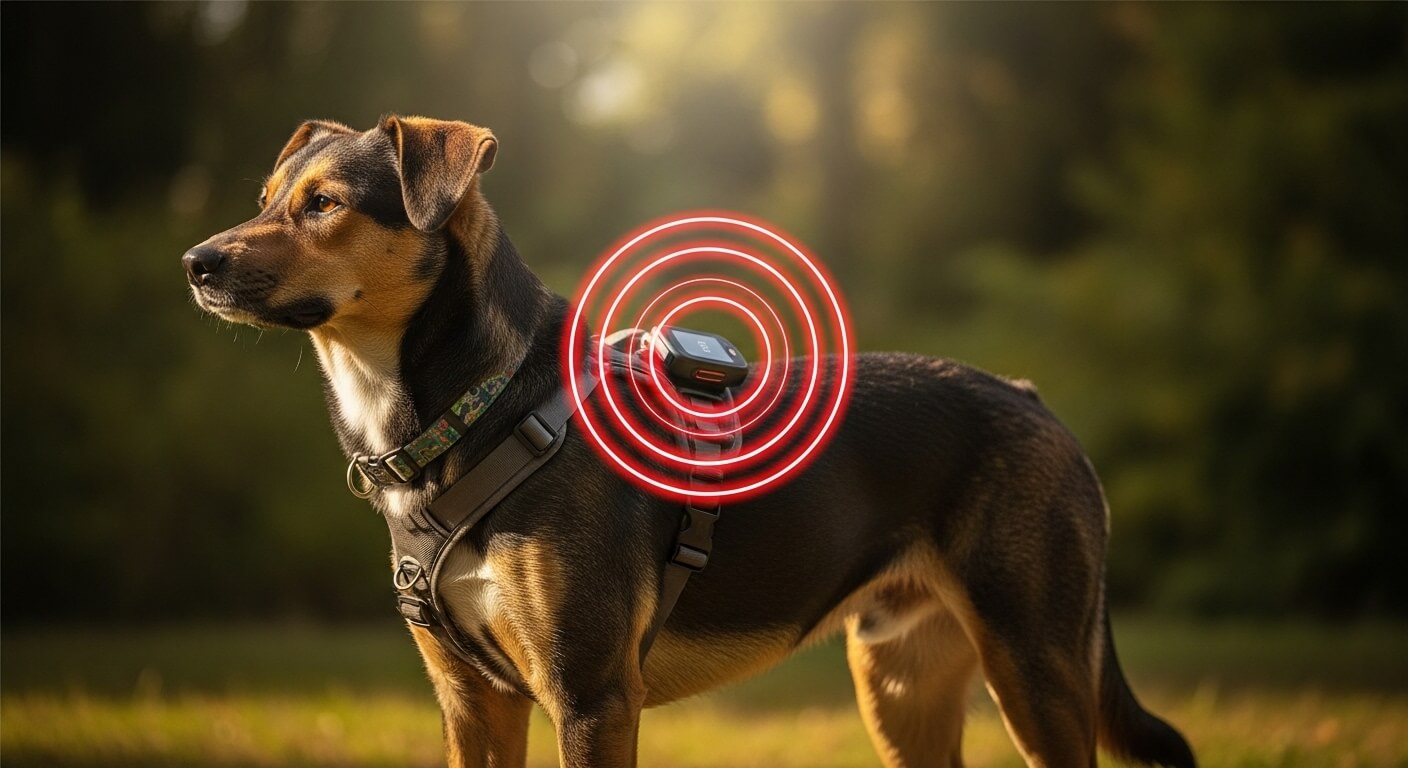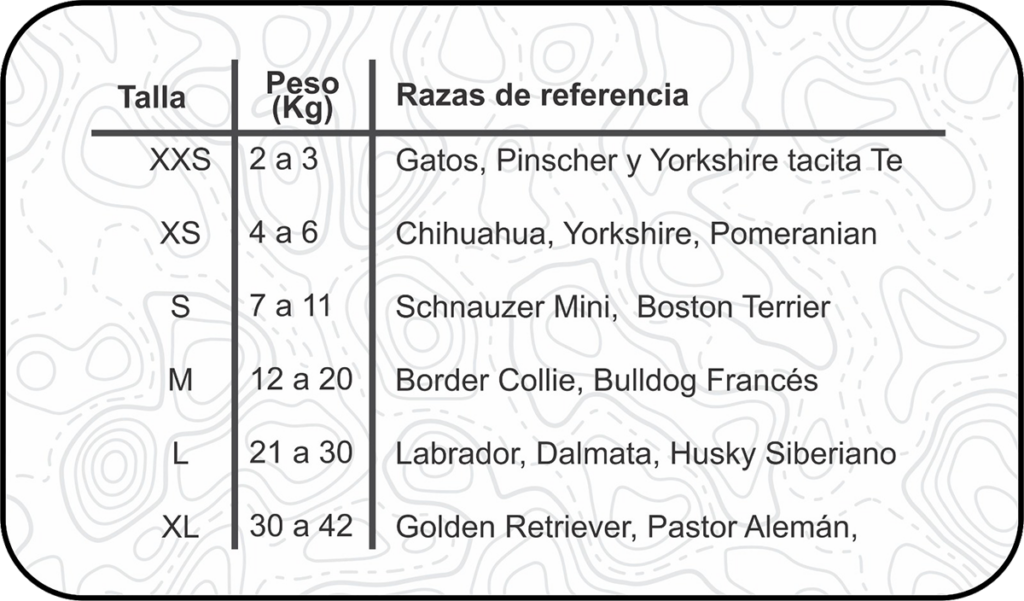
GPS and Chips for Dogs: A Complete Guide to Dog Tracking 2025
GPS devices and dog chips are tracking technologies that allow you to find your pet if it gets lost. While chips are permanent identifiers implanted under the skin, GPS offers real-time tracking with exact location and additional monitoring functions.
Key Differences Between GPS and Chips for Dogs
Identification Chips (Microchips)
Microchips are small devices the size of a grain of rice that are implanted under the dog's skin, usually between the shoulder blades. They work through RFID (radio frequency identification) technology and contain a unique number that is linked to the owner's contact information in a database.
Main characteristics:
- Size: 12mm in length by 2mm in diameter
- Duration: Permanent, works for the whole life of the animal
- Range: Can only be read with a special scanner at close range.
- Cost: Between $20-50 USD for implantation
- Maintenance: No batteries or maintenance required
GPS Devices for Dogs
Canine GPS are collars or handheld devices that use global positioning technology to track the dog's exact location in real time. They connect to mobile applications that allow monitoring the animal from anywhere.
Main characteristics:
- Accuracy: Accurate location with a 3-5 meter range
- Range: Unlimited with cellular coverage
- Additional features: activity monitoring, safe zone exit alerts
- Initial cost: $50-200 USD plus monthly subscription
- Battery life: 2-7 days depending on model
How Dog Chips Work
The microchip identification process is relatively simple but effective. The veterinarian uses a special syringe to insert the chip under the animal's skin in a procedure that takes less than a minute and is comparable to a vaccination in terms of discomfort.
Once implanted, the chip remains inactive until an RFID scanner comes close enough to activate it. When this happens, the chip transmits its unique number, which is then searched against national and international databases to find the owner's contact information.
Main databases:
- AAHA Universal Pet Microchip Lookup
- Petlink
- HomeAgain
- AKC Reunite
It is crucial to keep the contact information updated in the corresponding database, as a chip without current data is useless for the recovery of the animal.
Canine GPS operation
GPS devices for dogs combine several technologies to provide precise location and advanced functionality. They use signals from GPS satellites, cell phone towers and sometimes Wi-Fi to determine and transmit the animal's location.
Operating process:
- The device receives signals from multiple GPS satellites.
- Calculates the exact position by triangulation
- Transmits data over cellular networks
- The information reaches the manufacturer's servers
- Updated in real time on the owner's mobile application
Most modern canine GPSs include accelerometers and gyroscopes that record the dog's physical activity, providing data on exercise, rest and behavior patterns.
Advantages and Disadvantages of Each System
Advantages of Microchips
- Total permanence: Cannot be lost or damaged
- Maintenance free: No loading and no replacements required
- One-time cost: You only pay once for the implantation
- Universal acceptance: Recognized by shelters and veterinarians worldwide
- Minimum size: Does not affect the animal's comfort
Disadvantages of Microchips
- It is not active tracking: Only works when someone scans the animal
- External dependence: Requires whoever finds the dog to take it for scanning
- No real-time location: Does not indicate where the lost animal is
- Limited information: Contains only basic identification data
Advantages of Canine GPS
- Immediate localization: Exact location in real time
- Proactive alerts: Automatic notifications of unusual movements
- Route history: Record of places visited
- Health monitoring: Activity and fiscal year data
- Safe zones: Alerts when the dog leaves predefined areas
Disadvantages of Canine GPS
- Battery dependency: Requires regular charging
- Recurring costs: Mandatory monthly subscriptions
- Physical vulnerability: May be lost or damaged
- Limited coverage: Reduced functionality without cellular signal
- Additional weight: May be uncomfortable for small dogs
Factors to Consider When Choosing
Dog Size and Breed
Small dogs (less than 10 kg) may find larger and heavier GPS uncomfortable. For these breeds, microchips are always the most practical option, although an ultralight GPS can be considered as an add-on.
Medium and large dogs (over 15 kg) can carry GPS without comfort problems, making them excellent candidates for active tracking systems.
Lifestyle and Environment
Dogs living in rural areas or near forests benefit greatly from GPS, as the chances of someone finding and scanning them are lower. In urban environments, where there are more shelters and veterinarians, microchips are more effective.
Very active dogs or dogs with a tendency to run away are ideal candidates for GPS, while quiet, house pets can be sufficiently protected with microchipping alone.
Available Budget
Microchips represent a one-time investment of $20-50 USD, while GPS requires an initial investment of $50-200 USD plus monthly subscriptions of $5-20 USD. In the long run, GPS is significantly more expensive.
Best Usage Practices
For Microchips
- Immediate registration: Register the chip in the database as soon as it is implanted.
- Regular updating: Review and update your contact information annually.
- Periodic verification: Ask the veterinarian to verify the presence and functioning of the chip during routine visits.
- Multiple contacts: Record alternative contact information (family members, friends).
For Canine GPS
- Programmed load: Establishes charging routines to prevent battery drainage
- Correct fit: Make sure the collar is neither too tight nor too loose.
- Safety zones: Set up virtual perimeters around your home and frequent locations
- Regular testing: Verify device performance and accuracy on a monthly basis.
Product Recommendations 2025
GPS Highlights
Whistle GO Explore: Excellent battery life (20 days) and water resistance. Includes comprehensive health monitoring and is ideal for active dogs.
Fi Series 3: Sleek design with long battery life (3 months) and nationwide LTE network. Perfect for owners who travel frequently.
Tractive GPS: Affordable option with full functionality and affordable subscription. Good value for money for new users.
Recommended Microchips
HomeAgain: Largest recovery network with 24/7 support and optional medical alerts.
AVID: High quality chips with excellent read rate and wide international compatibility.
Conclusion and Final Recommendation
The choice between GPS and chips for dogs should not be exclusive. The most effective strategy combines both technologies: the microchip as a permanent and reliable identification system, and GPS as an active tracking and prevention tool.
For most responsible owners, it is recommended to start with the implantation of a microchip because of its unique cost and proven effectiveness. Subsequently, evaluate the addition of a GPS based on the dog's behavior, environment and budgetary capacity.
This dual approach maximizes the chances of successful recovery while adapting to different loss scenarios, from momentary escape to prolonged disappearance.







